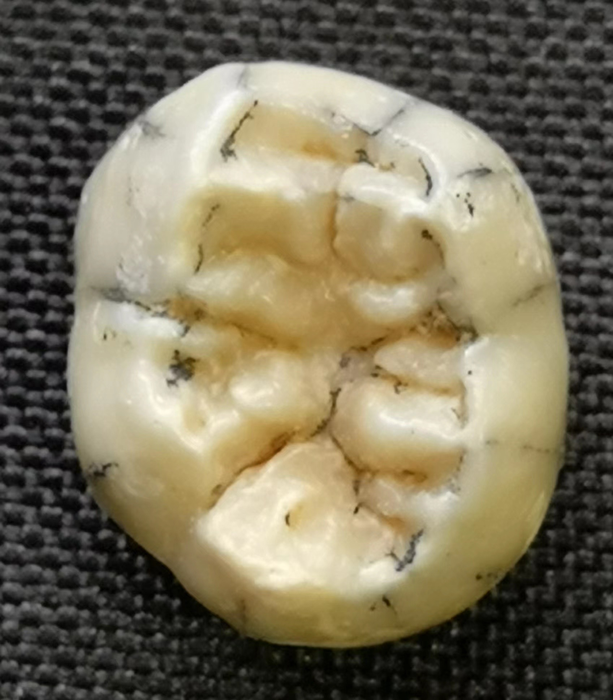Prehistoric tooth of young girl found in Laos could help us understand modern human evolution
The tooth of a young girl found in a cave in Laos has been revealed to belong to a group of prehistoric human relatives known as Denisovans, and the discovery is helping researchers better understand modern human evolution.
Denisovans are relatively newly discovered human relative, as their remains were first discovered in a Siberian cave in northern Russia in 2010. More remains have been found since then, including bones at least 200,000 years old and a jawbone found in Tibet.
However the discovery of the tooth, a molar, in Laos is the first time Denisovans have been found in Southeast Asia, and provides a link to the modern humans who live in the area today. Their findings were published in the journal Nature Communications on Tuesday.
"When we found the tooth, we were astonished because we weren’t looking for Denisovans or even anticipating this type of discovery," Laura Shackelford, co-author and paleoanthropologist at the University of Illinois Urbana-Champaign, told USA TODAY via email.

The tooth was found near Tam Ngu Hao in a location known as Cobra Cave, around 150 miles north of the Laos capital of Vientiane. It is similar to a modern human tooth, the only difference is the cusp and ridges on its surface. Found in 2018, the fossil likely ended up in the cave during a flooding event, as it was found among other animal fossils.
"This is the first time we have found anything this far south. The finding of the molar thus changes our understanding of the geographical distribution of the Denisovans," Eske Willerslev, co-author of the study and professor at the University of Copenhagen in Denmark, said in a statement.
The humid conditions of Laos meant the DNA of the tooth wasn't well preserved, but by analyzing the sediment the tooth was in, researchers were able to estimate the tooth is 131,000-to-164,000-years-old. Ancient proteins found in the fossil suggested it belonged to a young female Denisovan, aged 3 to 8.
"Because the molar had not erupted yet, hence not worn out, we could also with great certainty assess the girl's age," said Fabrice Demeter, lead author of the study and assistant professor at the University of Copenhagen.
Sinkhole discovery: Giant sinkhole found in China has hidden forest with ancient trees growing at its floor
Blast from the past: Oldest remains of modern humans are much older than thought, researchers say
Researchers believe the discovery of the Denisovan in the region adds another piece to the puzzle in human evolution. They knew modern natives in the Philippines, Australia and the Oceania area of Melanesia shared 5% of their DNA with Denisovans, as well as other Southeast Asia populations, but researchers were unsure how that came to be.
The tooth gives proof the species was in the area, and at some point in time, interbred with modern humans in southeast Asia.
"The Tam Ngu Hao 2 molar gives tangible evidence of what we have previously known based on this genetic data," Shackelford said.
Denisovans are related to Neanderthals. The two species existed at the same time period, but they never intertwined geographically. There is also less known about Denisovans since they were discovered so recently.
"We really have no idea what they looked like or how they may have been similar to or different from modern humans or Neandertals," Shackelford said.
Exploring caves in 3D: Technology helps scientists discover cache of ancient Native American cave art
What's everyone talking about?: Sign up for our trending newsletter to get the latest news of the day
But what the tooth also shows is that Denisovans were very adaptable to extreme weather. The original location where they were found in Siberia indicates they were able to live in the cold Arctic conditions like Neanderthals, but they also could adapt to the tropic region in Southeast Asia.
Shackleford added they are just "scratching the surface" on understanding Denisovans, but the goal is to find more fossils in hopes to get an idea of their growth and development, and what they may have looked like.
"Given that there are only a handful of fossils, there is room for even more uncertainty," she said.
Follow Jordan Mendoza on Twitter: @jordan_mendoza5.
This article originally appeared on USA TODAY: Ancient tooth of young girl may be linked to modern human evolution
